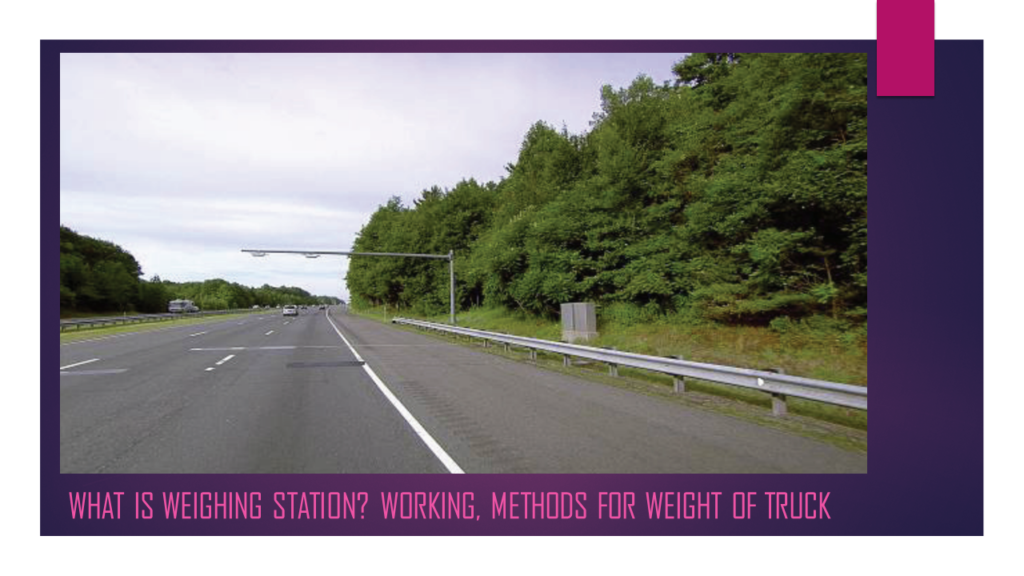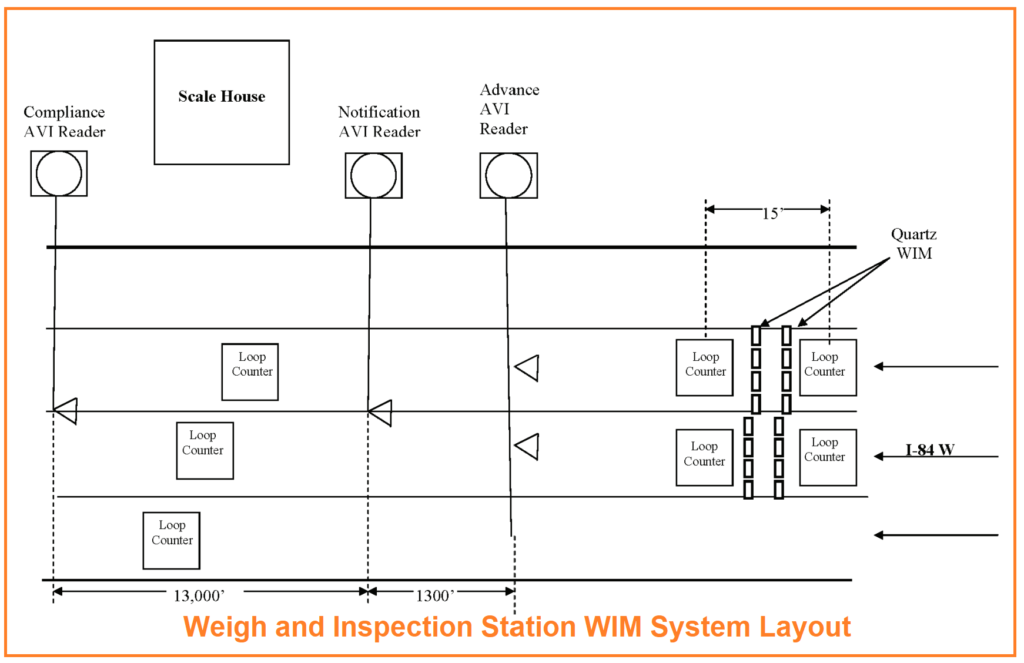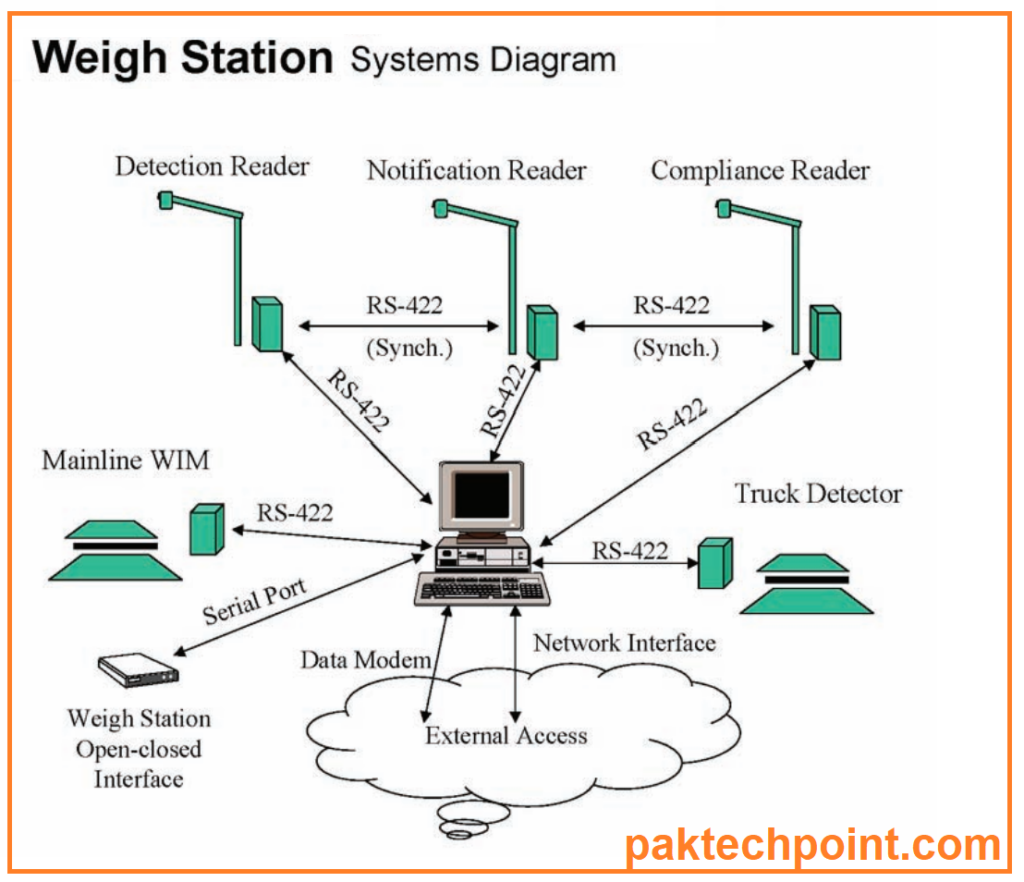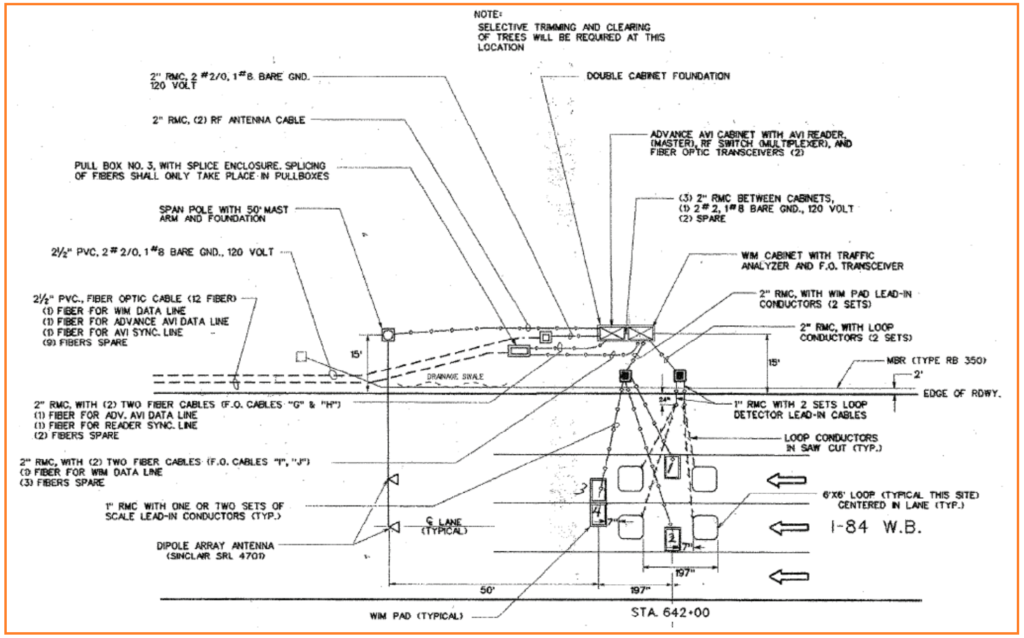A Weighing Station, often referred to as a weigh station or weighbridge, is a specialized facility strategically located along highways and major transportation routes. Its primary purpose is to weigh commercial vehicles and assess their compliance with weight regulations, safety standards, and other legal requirements. Weigh stations play a crucial role in ensuring road safety, preserving infrastructure, and enforcing transportation laws.

Methods for Determining the Weight of a Truck
In addition to various types of scales, there are multiple methods for determining the weight of a truck:
- One-Axle Weighing: This method involves a truck gradually driving across a single scale, pausing each time a set of wheels is on the scale. After weighing all the axles individually, the weights are summed to calculate the total gross weight of the truck.
- One-Stop Weighing: In this approach, a series of scales are strategically positioned so that the entire truck can be weighed simultaneously. These scales are typically interconnected to a central electronic controller, which automatically combines the axle weights to determine the overall gross weight of the truck.
- Weigh-in-Motion (WIM): WIM is an increasingly popular method that employs embedded sensors to calculate the weight per axle as a truck drives over sensor pads or strips. Unlike the first two methods, WIM systems allow trucks to maintain their speed without the need for a complete stop on the scales. Some advanced WIM systems are integrated into highways, enabling continuous monitoring of all passing traffic at normal speeds.
These methods offer varying degrees of efficiency, accuracy, and convenience for weight measurement, and the choice of method depends on factors such as operational requirements, available technology, and the need for real-time data collection. WIM systems, in particular, are gaining traction due to their ability to monitor traffic without causing delays and disruptions.
Weighing Station Working
The operation of Weighing Stations is discussed in the following sections, highlighting the differences in geometric constraints and technologies employed. This example focuses on the High-speed Mainline Weigh-in-Motion (WIM) Scale and E-Screening System.
Weighing Station Components:
The system comprises several key components, including:
- Automated Vehicle Identification (AVI) System: This includes the WIM scale, Advance AVI Reader, Notification AVI Reader, and Compliance AVI Reader.
- Weighing Station Sign: An “Open/Closed” weigh station sign directs commercial vehicles to stop at the station, except for those equipped with transponders, which may receive a bypass signal.
- Transponders: Commercial vehicles equipped with transponders (costing $40 per unit) can participate in the pre-clearance and screening system and make toll payments on designated routes.
Operation Overview:
As commercial vehicles approach the station, the “Open” sign guides them to the station. Transponder-equipped vehicles may receive a bypass signal.
Advance AVI Reader: Located approximately ½ mile before the Union Station, this reader consists of inductive loops in the right and center lanes. It communicates with the WIM scale, which was recently upgraded to a quartz piezoelectric high-speed WIM scale.
Transponder Reader: Positioned 50 feet from the WIM scale, this reader communicates with in-vehicle transponders. It sends data to a screening computer in the station, correlating WIM data, vehicle classification, credentials, safety information, and transponder data.

Notification AVI Reader: Located approximately 1,300 feet after the Advance AVI Reader, this reader informs drivers about possible bypass options based on various factors, including weight, credentials, inspections, and safety ratings.
Compliance AVI Reader: Situated on the I-84 mainline, near the station’s entrance and exit ramps, this reader includes transponder readers, antennae poles, and truck detectors. It utilizes computer software to issue compliance alarms and detect unauthorized vehicle bypasses.
Electronic Safety and Screening System: This system conducts electronic screening of credentials, inspections, and federal safety ratings in addition to weight checks.
This integrated AVI system streamlines the weighing and screening processes, promoting efficiency and compliance with safety and credential requirements.


E-Screening System of Weighing Station
The E-Screening System, integrated with the high-speed mainline Weigh-in-Motion (WIM) scale of Weighing Station, serves several crucial functions:
- Vehicle Weight Identification: It identifies the weight of vehicles passing through the system.
- Credential Verification: The system checks the credentials of commercial vehicles, ensuring they meet the required standards.
- Motor Carrier Safety Rating Assessment: It assesses the safety ratings of motor carriers.
- Compliance Statistics: The system compiles compliance statistics, which aid in making informed program and policy decisions.
Currently, this system operates on a voluntary basis, allowing registered commercial vehicles to participate. Participation involves the purchase of a specialized transponder, which grants vehicles the ability to bypass the “Open” Union Station under specific conditions. These conditions include compliance with weight limits, regulatory requirements, and random selection criteria. However, it’s important to note that only a relatively small percentage of commercial vehicles have equipped the required transponders, limiting participation.
In addition to the electronic screening system, there’s a Safety and Credentials Information Exchange capability. This feature enables roadside enforcement personnel to upload safety inspection reports for commercial vehicles to the national Safety and Fitness Electronic Record (SAFER) system. The SAFER system is part of the Department of Transportation’s Intelligent Transportation System (ITS), designed to enhance roadway safety, reduce delays and air pollution, and improve the overall productivity of commercial vehicle operations (CVO) through advanced technology. Connecticut actively participates in the SAFER system.
The electronic safety and screening operations are integral components of Connecticut’s Commercial Vehicle Information Systems and Networks (CVISN) Program and its Performance and Registration Information Systems Management (PRISM) Project. These federal-state initiatives leverage Intelligent Transportation Systems technology to facilitate the safe and legal movement of commercial vehicle traffic within Connecticut and nationwide. Both programs share a common goal: enhancing highway safety. They achieve this by rewarding safe motor carriers, penalizing unsafe carriers, and removing hazardous commercial vehicles from the roadways.
Collaborating agencies in the Connecticut CVISN program include:
- Connecticut Department of Motor Vehicles (Lead Agency)
- Connecticut Department of Information Technology
- Connecticut Department of Public Safety
- Connecticut Department of Revenue Services
- Connecticut Department of Transportation
- Federal Motor Carrier Safety Administration
- Motor Transport Association of Connecticut, Inc.
These collaborative efforts aim to improve road safety and enhance the efficiency of commercial vehicle operations while ensuring compliance with regulations and standards.